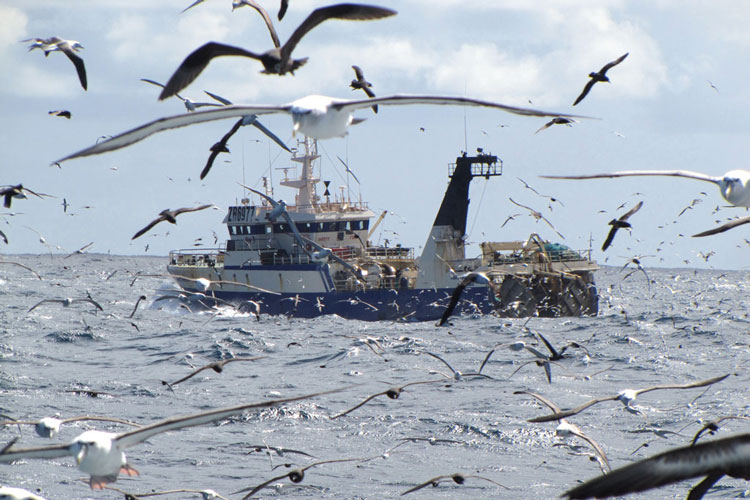Best way to protect ocean fisheries? Let nations profit from them
Giving countries exclusive access to fisheries within 200 miles of shore gives them the incentive to police unauthorized fishing and protect ocean resources

October 11, 2019
Overfishing is a major problem for the world’s oceans, but a strategy adopted nearly 50 years ago has helped protect fisheries: giving nations exclusive rights to waters 200 miles offshore and letting them police their own fish stocks.
A study by UC Berkeley graduate student Gabriel Englander shows that the nations that reap the most value from fisheries within their exclusive economic zones (EEZs) are the most effective at keeping other nations out. These results, published this week in the journal Nature Sustainability, are the first to demonstrate that assigning property rights to countries leads to the protection of fisheries from unauthorized fishing.
EEZs were first established in the 1970s, giving nations authority over fish, oil and mineral resources in a huge chunk, some 39%, of the world’s oceans. Before that, countries had authority only within three miles of land, leaving the bulk of marine resources free for exploitation.
Using newly available data, Englander found that unauthorized foreign fishing is 81% lower just inside EEZs compared to just outside them. Today, more than 95% of global marine fish catch occurs inside EEZs.
The results could have implications for preserving fisheries in the remainder of the ocean. The United Nations recently convened the Intergovernmental Conference on Marine Biodiversity of Areas Beyond National Jurisdiction (BBNJ) to consider the creation of new marine protected areas on the high seas, which are remote and costly to police.
“BBNJ negotiators could also consider extending property rights to high seas regions as an alternative or complement to high seas marine protected areas,” Englander wrote in his paper.
Englander used new data made available in 2017 by Global Fishing Watch on large vessels and their movements in space and time. They were able to make inferences about fishing activity based on a convolutional neural network analysis of vessel movement, allowing Englander to compare fishing inside and outside EEZs.
He found that just 10 EEZ sea regions account for 97% of the global deterrence effect.
“The large overall deterrence effect comes from just a couple of places. What these (EEZs) have in common is that they are all valuable near their boundaries,” said Englander, who is a fifth-year grad student in the Department of Agricultural and Resource Economics of the College of Natural Resources. “Because enforcing EEZ boundaries is so expensive, it is only worthwhile for countries with the most valuable fisheries near their boundaries.”
These sea regions belong to Argentina, Iceland, Norway, Faroe Islands, Falkland Islands, Canada, Marshall Islands and Peru and contain some of the most vulnerable species, including Argentine Angelshark, Greenland Shark and Atlantic Halibut.
“Englander’s superb analysis reveals that entry by unauthorized vessels to the EEZs has been deterred,” concluded Scott Barrett of Columbia University in a commentary in the same edition of the journal. “It remains for future research to show whether this deterrence effect has also caused coastal fisheries to be conserved.”
Are unauthorized foreign vessels deterred from fishing inside Exclusive Economic Zones?